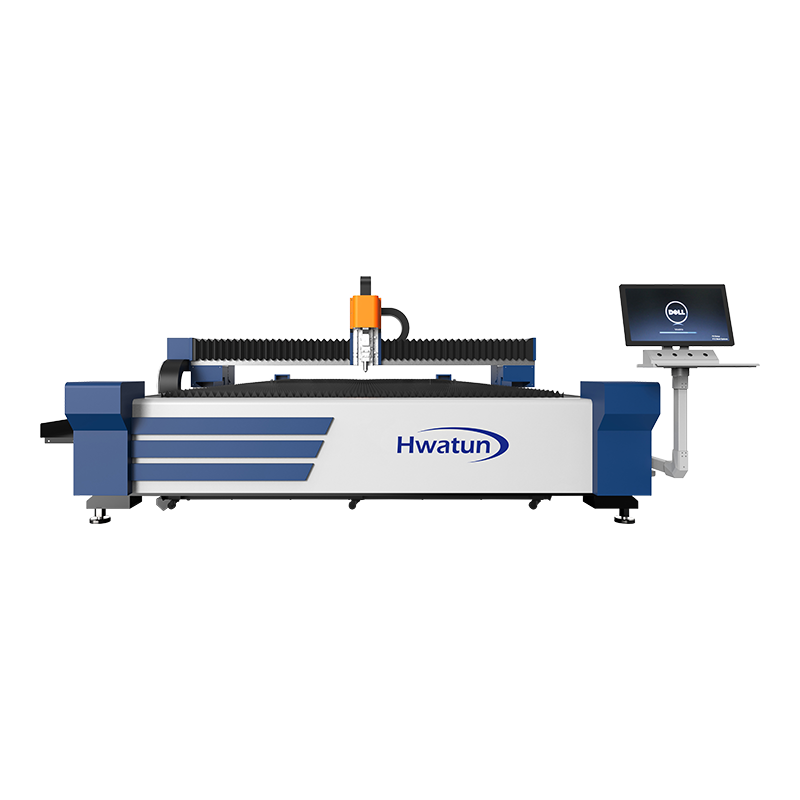Web Menu
Product Search
Exit Menu
How does CNC Laser Cutting Machine optimize material cutting?
The process of optimizing material cutting by CNC laser cutting machine is mainly achieved by rationally planning cutting paths, reducing waste and improving cutting efficiency. The following are several common optimization methods:
Nesting optimization
Nesting optimization refers to minimizing waste by rationally arranging the position of cutting patterns on the plate. Specialized nesting software (such as AutoNest, SigmaNEST, etc.) is usually used to help designers nest materials to ensure maximum material utilization.
Avoid waste: Try to arrange cutting patterns closely on the surface of the material to reduce blank areas.
Consider the cutting order: Reasonable arrangement of cutting paths can reduce material loss during cutting and avoid unnecessary back cutting.
Cutting speed optimization
The cutting speed has a direct impact on the cutting effect and material loss. By adjusting the cutting speed, the cutting process can be optimized.
Different cutting speeds for different materials and thicknesses: For thin materials, faster cutting speeds can be used, while for thick materials, slower speeds are required to ensure cutting quality and accuracy.
Material property adjustment: For different materials (such as stainless steel, aluminum alloy, wood, etc.), adjust the laser power and cutting speed to ensure that the material is fully cut while reducing material waste.
Power and focus optimization

The power and focus position of laser cutting have an important impact on the cutting quality. Proper adjustment of these parameters can improve the cutting quality and reduce the excessive thermal impact of the material.
Select the appropriate laser power: According to the type and thickness of the cutting material, selecting the appropriate power can not only increase the cutting speed, but also reduce excessive heat accumulation and deformation.
Focus adjustment: Adjusting the focus position can ensure the accuracy and depth of the cutting, and avoid unnecessary losses caused by focus offset.
Cutting path optimization
Optimizing the cutting path can not only improve efficiency, but also reduce material loss.
Select the appropriate cutting path: Select the shortest path for cutting to avoid too much backtracking.
Minimize path intersection: Avoid the cutting head from rotating in the cut area, which can reduce the tool's pause and repeated cutting.
Material selection and thickness control
Selecting suitable materials and controlling material thickness can reduce the energy loss of laser cutting.
Reasonable material selection: Different materials have different laser absorption rates, and the appropriate material should be selected according to the cutting requirements.
Control cutting thickness: For thicker materials, multiple cutting and layered cutting can reduce energy waste while ensuring cutting accuracy.
Software and Automation System
Some high-end CNC laser cutting machines are equipped with automatic nesting and cutting path optimization systems. These systems can adjust parameters in real time to improve cutting efficiency and reduce manual operations.
Automated optimization: Modern CNC laser cutting machines are usually equipped with automatic calibration functions, which can automatically adjust parameters according to the changes of different materials to ensure the best cutting effect.
Through the above methods, CNC laser cutting machines can effectively optimize the cutting process of materials, improve production efficiency, reduce waste, and thus reduce production costs.
News categories
Product categories
Related Products
 +86-159 5138 1316
+86-159 5138 1316 +86 180 6819 3096
+86 180 6819 3096 [email protected]
[email protected] Group 4, Xinba Village, Binhai New Area (jiaoxie Town), Laoba Port, Nantong City, Jiangsu, China.
Group 4, Xinba Village, Binhai New Area (jiaoxie Town), Laoba Port, Nantong City, Jiangsu, China.
Copyright © Nantong Hwatun Heavy Machine Tool Co., Ltd. All Rights Reserved.

 Eng
Eng  简体中文
简体中文 Español
Español русский
русский







